Jul 10, 2018 By Team YoungWonks *
What is the key to success? In today’s age of cutthroat competition, this is a often asked question. The answer is actually not that complicated, though it can be difficult to adhere to; it lies in: never giving up. YoungWonks students Oliver and Chaitanya actually learnt this firsthand at the recent RoboRave International 2018, a leading international robotics competition that was held this May in Albuquerque, New Mexico.
In an interview with YoungWonks founder and senior instructor Vishal Raina (check the link to the video below), Oliver recollects how they won the competition and asserts how self-belief is the only thing that keeps one going when the chips are down. “We actually won the RoboRave International by one second. Our robot was much faster than the others, so even though we had an error, we were able to restart and run again,” he says, adding that they didn’t give in despite the mounting challenges.
Keep Working At It
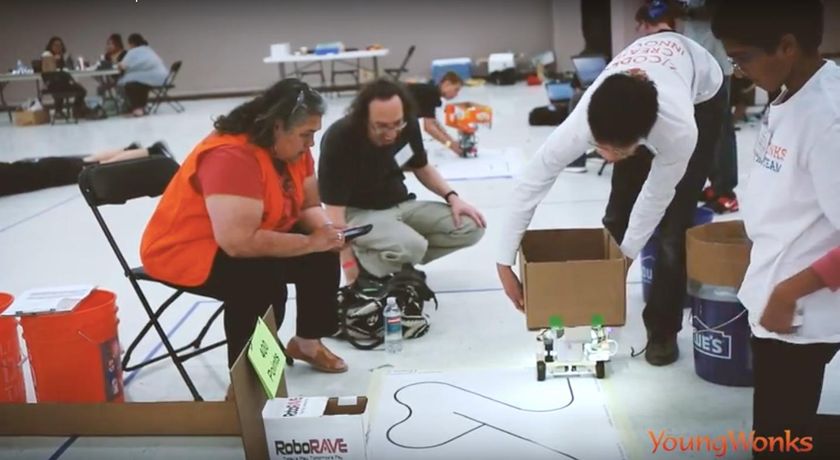
Self-belief needs to be accompanied by hard work and both Oliver and Chaitanya put in their hours for the desired result. Not surprisingly, their robot was way better than the others in the competition. Explains Oliver, “Everyone else was using infrared sensors for their robot, but these sensors are unreliable and dodgy in detecting colours and can often lose sight of the line. Our robot, on the other hand, used a whole new paradigm. We used a camera to look at the line and actually track the location of the line to achieve accuracy. So instead of just looking at a single row, our robot could actually see a little bit ahead and thus see if something was coming up on the line at an intersection.”
Know That Things Can (And Often Will) Go Wrong
Despite the rigorous prep, when Oliver and Chaitanya got to the event and put their robot on the track, things began to look daunting soon after. “So our robot started running and as it went past the tower where it’s meant to drop the ping-pong balls, it went and hit the tower. This was a serious problem and it meant one thing once we examined the robot: massive hardware modifications were needed.”
Facing the Challenge Head On
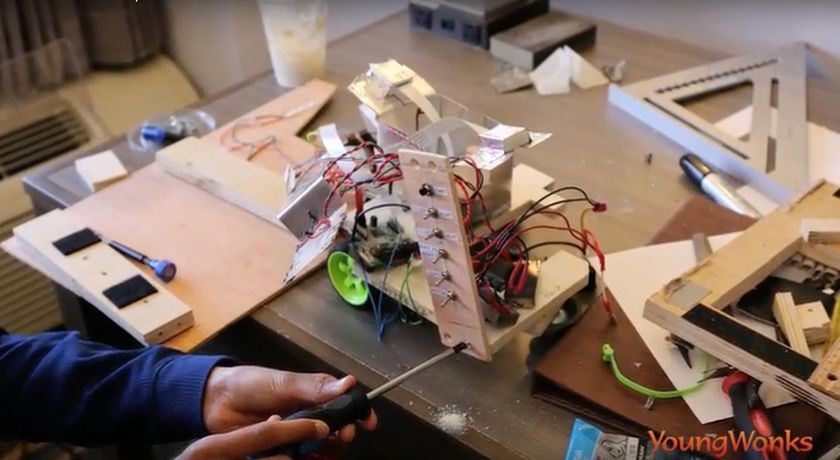
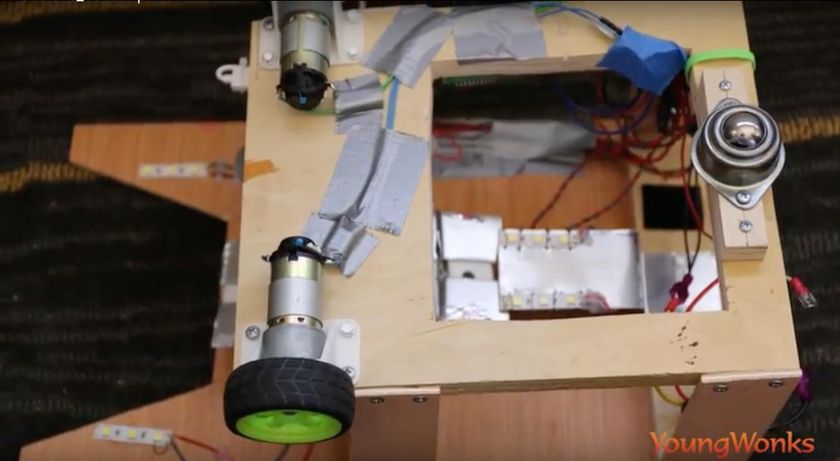
What came next was quite challenging: they went down to hardware store, bought a new saw, some wood and screws and stayed up till midnight taking all the electronics and all the hardware on the top off the robot, making a new base which they then fit into that specific track and a round of screwing everything back together and reprogramming it to work with the new base.
Their travails didn’t end there either, but it made for a dramatic story too. A little bit about the challenge itself: each participating robot needs to go forwards, i.e toward the tower, drop the ball, go backwards, then go forwards again - but this time carrying lots of balls - and drop them all into the tower (387 to be precise).
Oliver says that things were on track at the start. “In the beginning, our robot followed the line, went forward in the right fashion, and dropped the first ball. But when it went backwards, it didn’t notice that there was an intersection on the way back. We think this is because the track was reflective and a reflective track actually looks white. Now we actually had less of a problem with this than people with infrared sensors because each sensor can only see a single point. But the fact is that we still missed that intersection.”
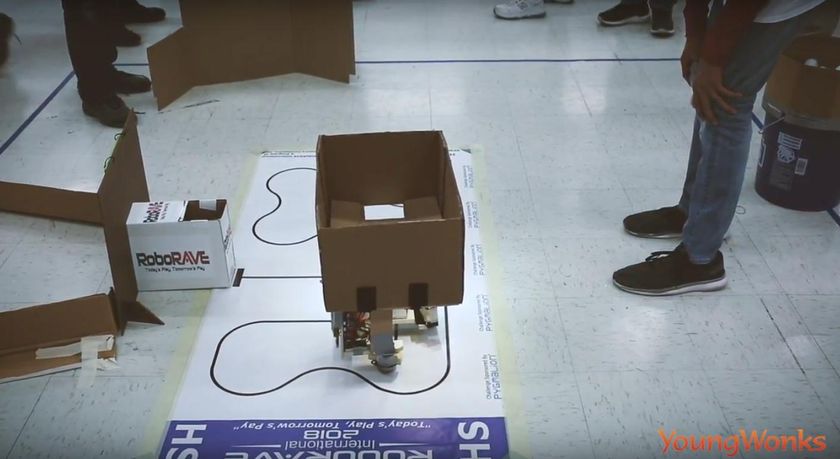
Don’t Hesitate to Go Back to the Start
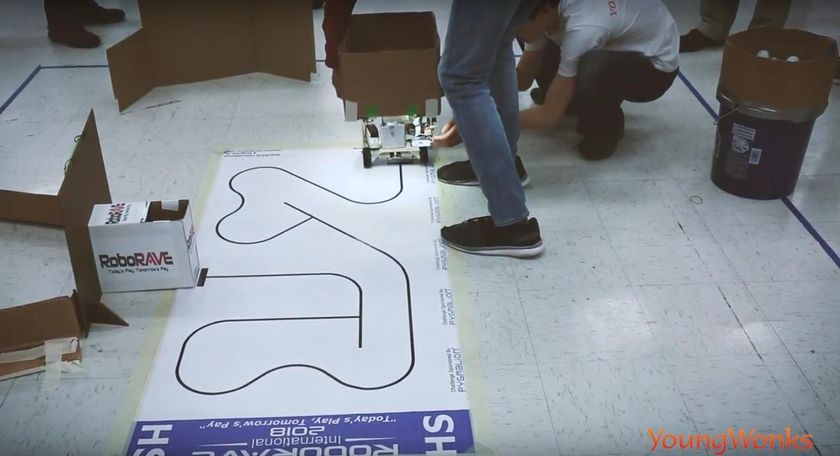
Oliver and Chaitanya realised they’d have to have to go back to the start of the route - this is allowed at RoboRave International - so they did just that, even if it meant losing precious time. Oliver offers a nail-biting account of what transpired: “Since our robot was so fast, we got it back to the start and had it running again. This time around, it did everything as intended and dropped the balls into the tower rather quickly. We could hear the other team’s robot dropping the balls, but we also knew that our ball dropping is very fast because we had used a vibration motor which the other teams didn’t have. So yeah, our robot start dropping the balls and we started pulling them away from the back of the tower. Soon enough, our robot finished the task - of putting 387 balls into the tower - and everyone around us yelled stop. Maybe half a second to a second later, the other team yelled stop. Looking at the video and the timer the scorekeeper was keeping, the difference between the two teams was roughly a second. We had won by about a second!”

Fighting Self-Doubt

As exhilarating as that story was, Oliver admits that self-doubt is quick to rear its head when things go awry: both he and Chaitanya couldn’t help but think that the new robot had, in fact, been assembled by them in a day’s time. Looking back, Oliver says, “It took us two nights of relentless reengineering and reprogramming and we faced many setbacks too, including the track being reflected. But the important thing is that we hold on to our self-belief and it worked for us. It reiterated that the key to winning is to never ever give up and never give in.”
The bottom-line is simple: hard work alone isn’t enough; self-motivation too is an important part of the success story.
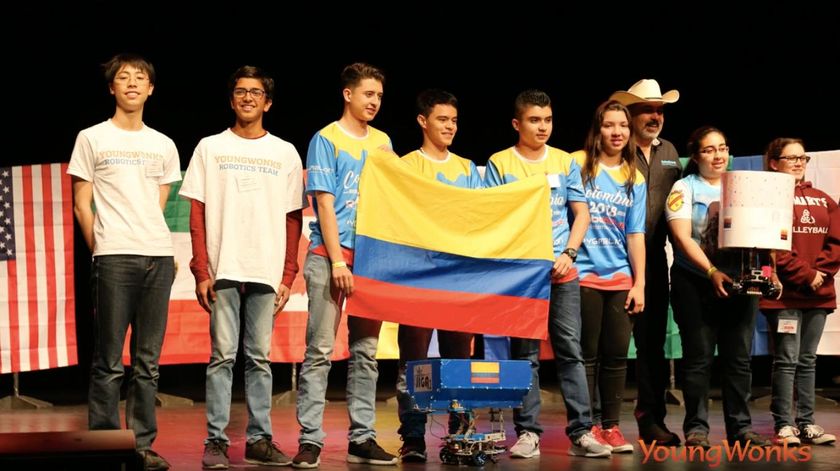
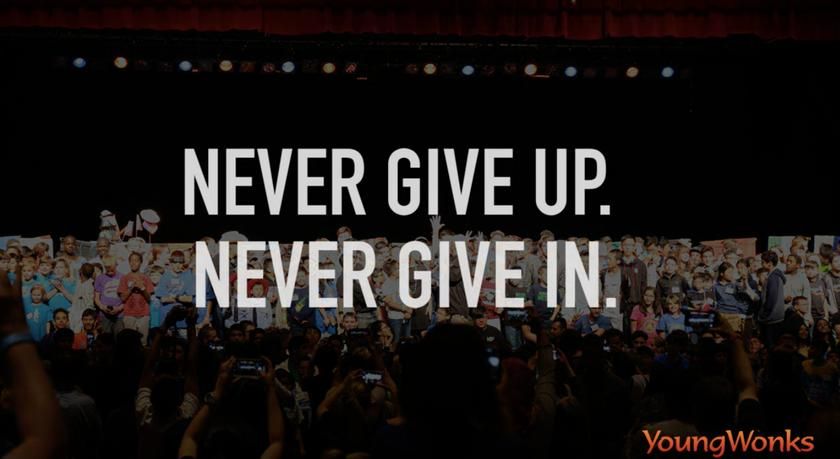
The Power of Perseverance in Learning to Code
Perseverance plays a monumental role in mastering any skill, and coding is no exception. Knowing when to take a step back, when to ask for help, and understanding that failure is just a part of the learning process are pivotal lessons that we emphasize in our Coding Classes for Kids. Through our Python Coding Classes for Kids, students learn to tackle problems with a determined mindset, exploring Python's extensive applications in a supportive environment. Similarly, our Raspberry Pi, Arduino and Game Development Coding Classes encourage young learners to persevere through challenges, thereby instilling confidence and building a strong foundation in coding and hardware programming. At YoungWonks, we believe that the key to winning in coding and in life is never giving up.
*Contributors: Written by Vidya Prabhu
